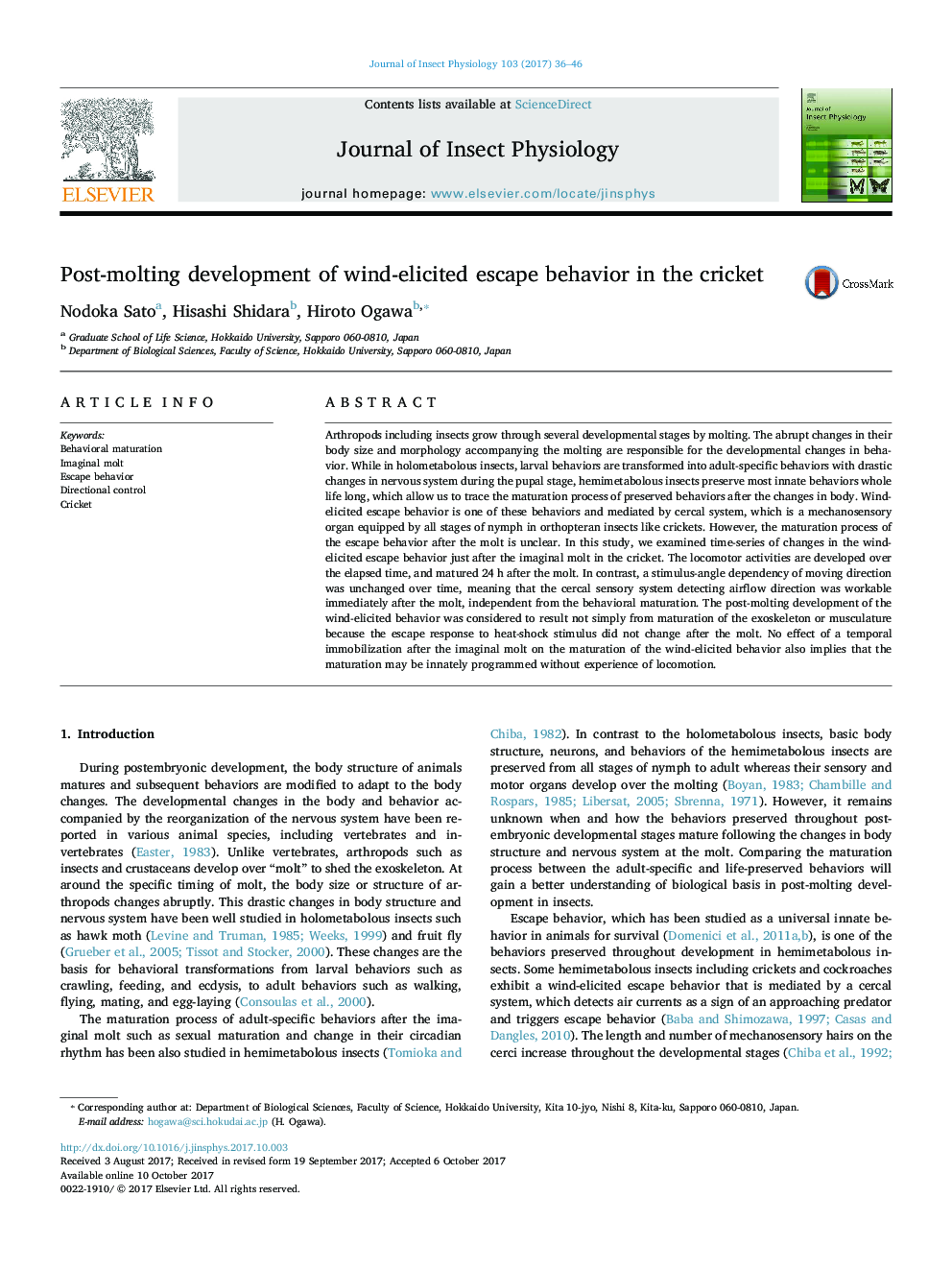| کد مقاله | کد نشریه | سال انتشار | مقاله انگلیسی | نسخه تمام متن |
|---|---|---|---|---|
| 5593081 | 1570969 | 2017 | 11 صفحه PDF | دانلود رایگان |
- Wind-elicited escape behavior developed depending on the elapsed time after molt.
- Moving direction was well controlled throughout the post-molting maturation.
- Behavioral development did not result from maturation of motor apparatus.
- Behavioral maturation was innately programed without experience of locomotion.
Arthropods including insects grow through several developmental stages by molting. The abrupt changes in their body size and morphology accompanying the molting are responsible for the developmental changes in behavior. While in holometabolous insects, larval behaviors are transformed into adult-specific behaviors with drastic changes in nervous system during the pupal stage, hemimetabolous insects preserve most innate behaviors whole life long, which allow us to trace the maturation process of preserved behaviors after the changes in body. Wind-elicited escape behavior is one of these behaviors and mediated by cercal system, which is a mechanosensory organ equipped by all stages of nymph in orthopteran insects like crickets. However, the maturation process of the escape behavior after the molt is unclear. In this study, we examined time-series of changes in the wind-elicited escape behavior just after the imaginal molt in the cricket. The locomotor activities are developed over the elapsed time, and matured 24Â h after the molt. In contrast, a stimulus-angle dependency of moving direction was unchanged over time, meaning that the cercal sensory system detecting airflow direction was workable immediately after the molt, independent from the behavioral maturation. The post-molting development of the wind-elicited behavior was considered to result not simply from maturation of the exoskeleton or musculature because the escape response to heat-shock stimulus did not change after the molt. No effect of a temporal immobilization after the imaginal molt on the maturation of the wind-elicited behavior also implies that the maturation may be innately programmed without experience of locomotion.
132
Journal: Journal of Insect Physiology - Volume 103, November 2017, Pages 36-46
